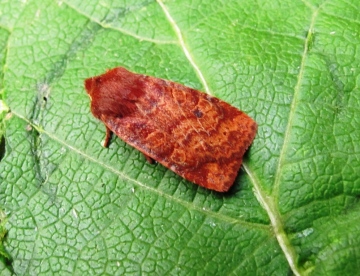Your Forum
This forum has now been more or less replaced by the Club's Facebook page at
The weblog below is for naturalists to use to report interesting sightings, ask questions, report on field meetings and generally post pictures and any information or questions generally relevant in some way to the wildlife and geology of Essex. You will need to
register and be
logged-on to post to the forum, and you need to upload pictures first, for use in posts.
Find out more
January 29th-February 4th 2012
Winter returneth. A cold, grey, but mostly dry week with often severe overnight frosts although the ear nipping, nose numbing north-easterlies at the beginning mercifully slackened off by the its close. Everything feels dormant; only the birds bring life and colour to a landscape. But they too are in cold weather mode, doing everything they can to conserve energy. Scan the sky and there are few birds flying apart from Wood Pigeons commuting between oilseed rape fields; even the normally acrobatic flocks of Rooks and Jackdaws, which delight in tumbling on the breeze, have curtailed their antics while the flocks of tits and other small birds working their way through the trees are strangely mute. At Blue House Farm, North Fambridge the Dunlin flocks have trebled in size and have been joined by groups of Knot, refugees from the exposed shores of the Dengie coast. All the waders are remarkably tame, their normal wariness inhibited by the cold, so reluctant are they to fly. If not exactly walking at your feet, like the Turnstones on Southend Pier, they feed happily (if feverishly) within a few yards of them. Even a week of very cold temperatures can numb muscles and slow reactions, a Dunlin paying the price of a few seconds delay at the talons of a marauding Sparrowhawk. Not all birds are suffering; 1100 Cormorants were seen sitting on sandbanks during a BTO Low Tide Count between Steeple Stone and Bradwell Power Station on 31st. They must get through a hell of a lot of sprats during the course of a week!
A bonfire was a welcome refuge from the cold at The Backwarden on 1st, its fuel a recently felled tree suffering from Acute Oak Decline. A white-capped, pink-gilled, stemless agaric growing on bramble stems keyed out as the Variable Oysterling Crepidotus variabilis; this and its relative C.cesatii (which has no English name), found on gorse stems at Mill Green Common on 29th, kept the fungi season going for another week. There were few signs of insect life though apart from a Chestnut (illustrated) which turned up in the kitchen one evening.

Rob Smith, County Butterfly Recorder, did find a single egg of a Purple Hairstreak on the bud of a scrub oak at Mill Green, one that was due to be removed. It has now been spared and we wait with interest to see if the egg survives the frosts and foraging tit flocks to hatch in the spring. |
|
Archives:
May 2020
Aug 2019
Jan 2019
Sep 2018
Jul 2016
Oct 2015
Jul 2015
May 2015
Apr 2015
Mar 2015
Feb 2015
Jan 2015
Dec 2014
Oct 2014
Sep 2014
Aug 2014
Jul 2014
May 2014
Apr 2014
Mar 2014
Feb 2014
Jan 2014
Dec 2013
Nov 2013
Sep 2013
Aug 2013
Jul 2013
Jun 2013
May 2013
Apr 2013
Mar 2013
Feb 2013
Jan 2013
Dec 2012
Nov 2012
Oct 2012
Sep 2012
Aug 2012
Jul 2012
Jun 2012
May 2012
Apr 2012
Mar 2012
Feb 2012
Jan 2012
Dec 2011
Nov 2011
Oct 2011
Sep 2011
Aug 2011
Jul 2011
Jun 2011
May 2011
Apr 2011
Mar 2011
Feb 2011
Jan 2011
Dec 2010
Nov 2010
Oct 2010
Sep 2010
Aug 2010
Jul 2010
Jun 2010
May 2010
Apr 2010
Mar 2010
Feb 2010
Nov 2009
Oct 2009
Aug 2009
Jul 2009
Jun 2009
May 2009
Apr 2009
Mar 2009
Feb 2009
Jan 2009
Nov 2008
Oct 2008
Sep 2008
Aug 2008
Jul 2008
Jun 2008
May 2008
Apr 2008
Mar 2008
Feb 2008
Jan 2008
Dec 2007
Nov 2007
current posts
|


















